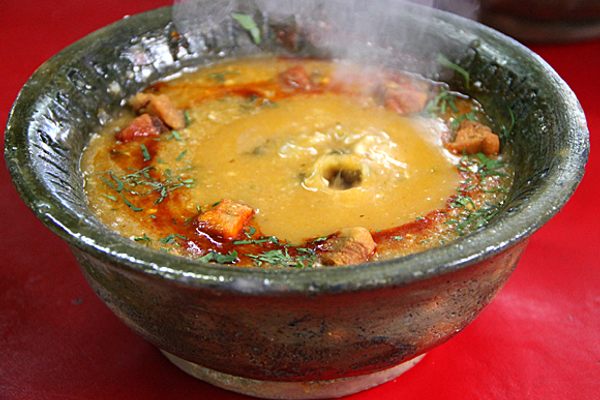There are hundreds of species of fruit in the Garcinia genus, many of which are adored in their native homes. Despite their local popularity, these fruits are rarely exported. Even the most famous of the bunch, the purple mangosteen, has only been allowed for import into the United States since 2007. Of the many lesser-known Garcinias, the achachairú (Garcinia humilis) stands out as a complex, tart gem that’s worth tracking down.
The achachairú is an egg-shaped fruit with a thick, orange rind. The flavor is sweet and moderately tart, with notes of mango, purple mangosteen, berries, and a dash of pepper. It is one of the most cherished fruits in its native Bolivia, where there is even an annual achachairú festival in the town of Porongo. When the fruit is in season, it flavors everything from ice cream to mojitos to mousse.
If you can’t make it to Bolivia, the other side of the world might be your next best bet. A plantation in Queensland, Australia, is cultivating the fruit, with the approval of the Bolivian government. Sold under the name “achacha,” it’s rapidly growing in popularity.
Unlike the purple mangosteen, the achachairú can be opened without a knife: You just need to first crack the skin, then separate the two halves. Its inner flesh is shockingly white and releases easily from the skin. The seed, however, stays firmly attached to the pulp, so the best way to enjoy an achachairú is to pop the entire peeled fruit in your mouth and suck until there is no flesh left. The large brown seeds can be discarded, but be sure to save the rind. It can be used as a spice to add sourness to food or blended with water and sugar to make a tart, refreshing drink.
Where to Try It
-
The Achachairú Festival
Plaza Principal de Porongo, Porongo, BoliviaThe annual festival devoted to the fruit typically takes place in December or January.
-
Heladeria Italiana Santa Cruz
Av. Rene Moreno 240 , Santa Cruz de la Sierra, BoliviaThis ice cream shop, in the Plaza Blacutt, features an achachairú flavor.
Written By
 Jared Rydelek
Jared Rydelek
Sources
- achacha.com.au/
- www.nytimes.com/2007/06/27/dining/27frui.html
- books.google.com/books?id=oO51AgAAQBAJ&pg=PA48-IA1&dq=Garcinia+humilis&hl=en&sa=X&ved=0ahUKEwjUs4Gn4tjZAhXKct8KHRivAlgQ6AEIKzAB#v=onepage&q=Garcinia%20humilis&f=false
- www.theplantlist.org/browse/A/Clusiaceae/Garcinia/
- www.thebohemiandiaries.com/achachairu/













